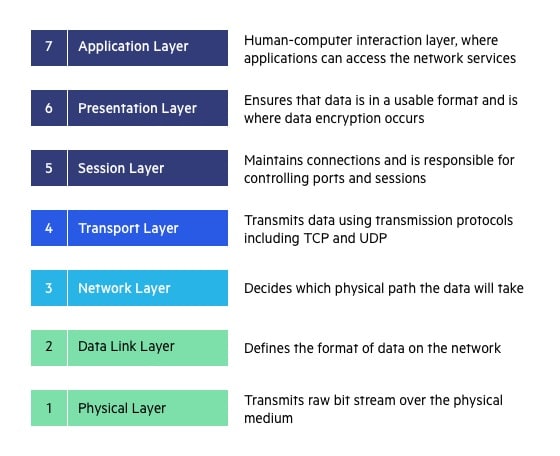The 100 Base-TX cables can support data speeds up to 100 meters and must possess minimum recommended node length of 2.5 meters between two cables.
100Base FX: In FX, the cable uses two pairs of fiber to support more than 100 Mbps.
The 100 Base-TX cables can support data speeds up to 100 meters and must possess minimum recommended node length of 2.5 meters between two cables.
100Base FX: In FX, the cable uses two pairs of fiber to support more than 100 Mbps.
The transport layer provides services to the application layer and takes services from the network layer. The data in the transport layer is referred to as Segments. It is responsible for the End to End Delivery of the complete message. The transport layer also provides the acknowledgement of the successful data transmission and re-transmits the data if an error is found.
• At sender’s side:
Transport layer receives the formatted data from the upper layers, performs Segmentation, and also implements Flow & Error control to ensure proper data transmission. It also adds Source and Destination port numbers in its header and forwards the segmented data to the Network Layer.
Note: The sender needs to know the port number associated with the receiver’s application.
Generally, this destination port number is configured, either by default or manually. For example, when a web application makes a request to a web server, it typically uses port number 80, because this is the default port assigned to web applications. Many applications have default ports assigned.
• At receiver’s side:
Transport Layer reads the port number from its header and forwards the Data which it has received to the respective application. It also performs sequencing and reassembling of the segmented data.
The functions of the transport layer are :
The services provided by the transport layer :
